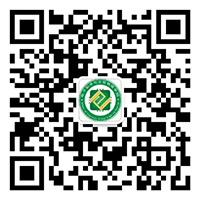报告时间:2019年12月31日(星期二)10:15至11:15
报告地点:翡翠科教楼A座第五会议室
报 告 人:傅岚 教授
工作单位:澳大利亚国立大学
举办单位:welcome888集团网站/888集团
报告人简介:
Professor Lan Fu received her PhD degree from the Australia National University (ANU) in 2001. Lan Fu is currently a tenured Professor and Associated Director (HDR) at the Research School of Physics, ANU. Lan Fu has published over 170 peer-review publications (110 journal papers and 2 book chapters), edited 6 conference proceedings/journal special issues, and held two US patents. She has delivered over 35 invited/keynote presentations at international conferences and served as Program Committee/Symposium Chair/Co-Chair for more than 30 international conferences, including MRS, CLEO, OSA Optics & Photonics Congress, IEEE Photonics Conference, International Conference on Nanoscience and Nanotechnology (ICONN) etc. Lan Fu was the recipient of the IEEE Photonic Society Graduate Student Fellowship (2000), Australian Research Council (ARC) Postdoctoral Fellowship (2002), ARF/QEII Fellowship (2005) and Future Fellowship (2012). She is a senior member of IEEE, IEEE/Photonics and EDS societies. She is also the current member of the Australian Academy of Science National Committee on Materials Science and Engineering, Secretary of the Executive Committee of Australian Materials Research Society (AMRS), and ARC College of Experts. Lan Fu’s main research interests include design, fabrication and integration of optoelectronic devices (lasers, LEDs, photodetectors and solar cells) based on low-dimensional III-V compound semiconductor structures including quantum wells, self-assembled quantum dots and nanowires.
报告简介:
III-V compound semiconductor nanowires (NWs) have drawn much attention as nanoscale light sources for integrated photonics due to their nanoscale size, good optical properties and strain relaxation feature enabling the monolithic growth on lattice mismatched substrates. In particular, NWs grown by selective area epitaxy (SAE) technique have many advantages such as controllability of their size and position, high uniformity in diameter and length, as well as complementary metal-oxide-semiconductor (CMOS) process compatibility, facilitating their integration with other electronic devices. With suitable wavelength ranging from 1.3 to 1.6 μm and lattice match of constituent materials, InGaAs/InP quantum well (QW) has been being widely used for optical communication devices. However there has been limited understanding on the growth of InGaAs/InP QW in nanowire architecture and their application for lasers or LEDs. In this talk, we present the study of the SAE growth of InGaAs/InP QW NW array by metalorganic chemical vapour deposition (MOCVD) technique, and the demonstration of both single and array nanowire LEDs with an in-depth investigation of their geometry related device properties.
III-V compound semiconductor nanowires have drawn much attention as nanoscale light sources for integrated photonics due to their nanoscale size, good optical properties and strain relaxation feature enabling the monolithic growth on lattice mismatched substrates. In this talk, we present the study of the selective area epitaxy growth of InGaAs/InP quantum well nanowire array by metalorganic chemical vapour deposition (MOCVD) technique, and the demonstration of both single and array nanowire LEDs with an in-depth investigation of their geometry related device properties.







